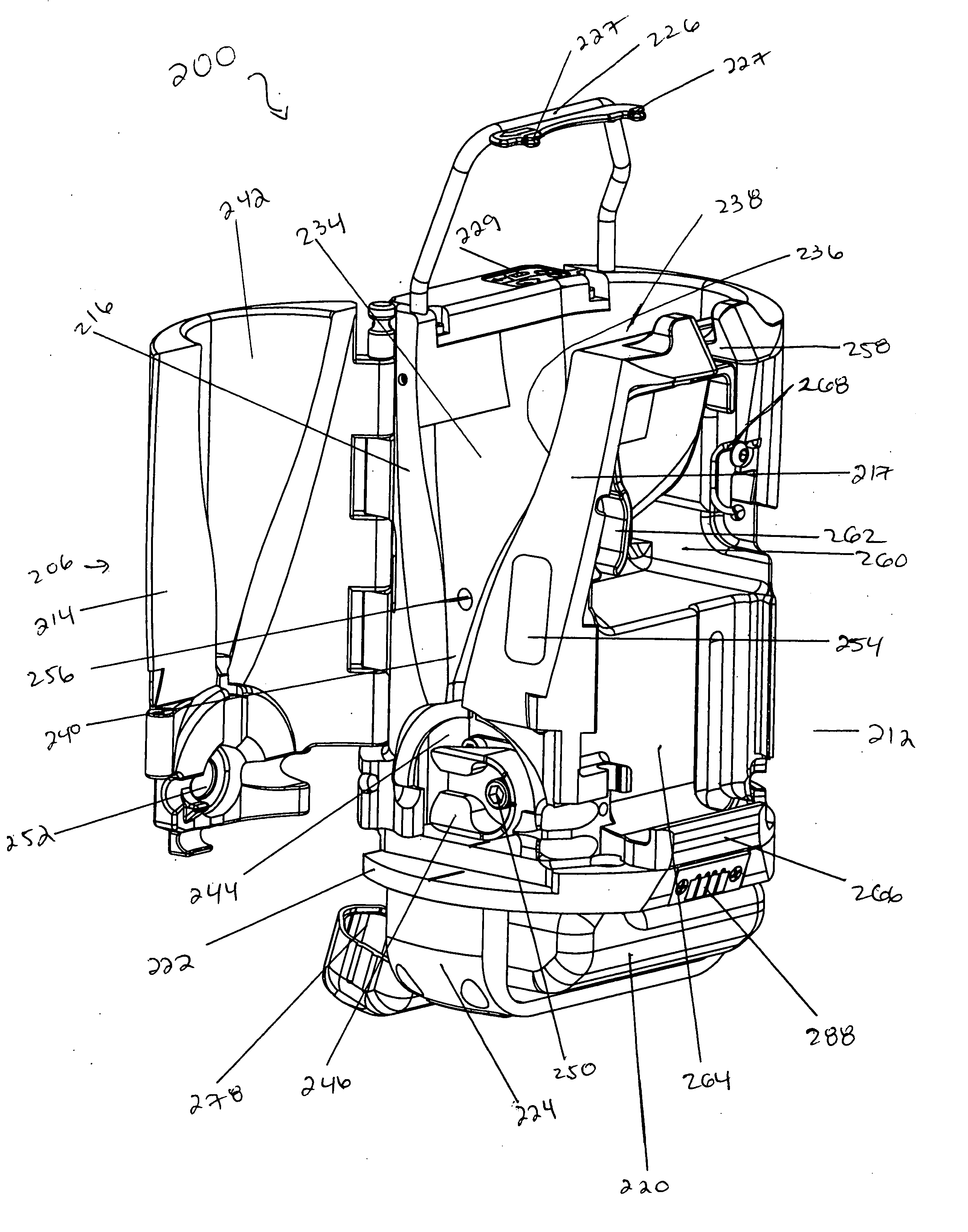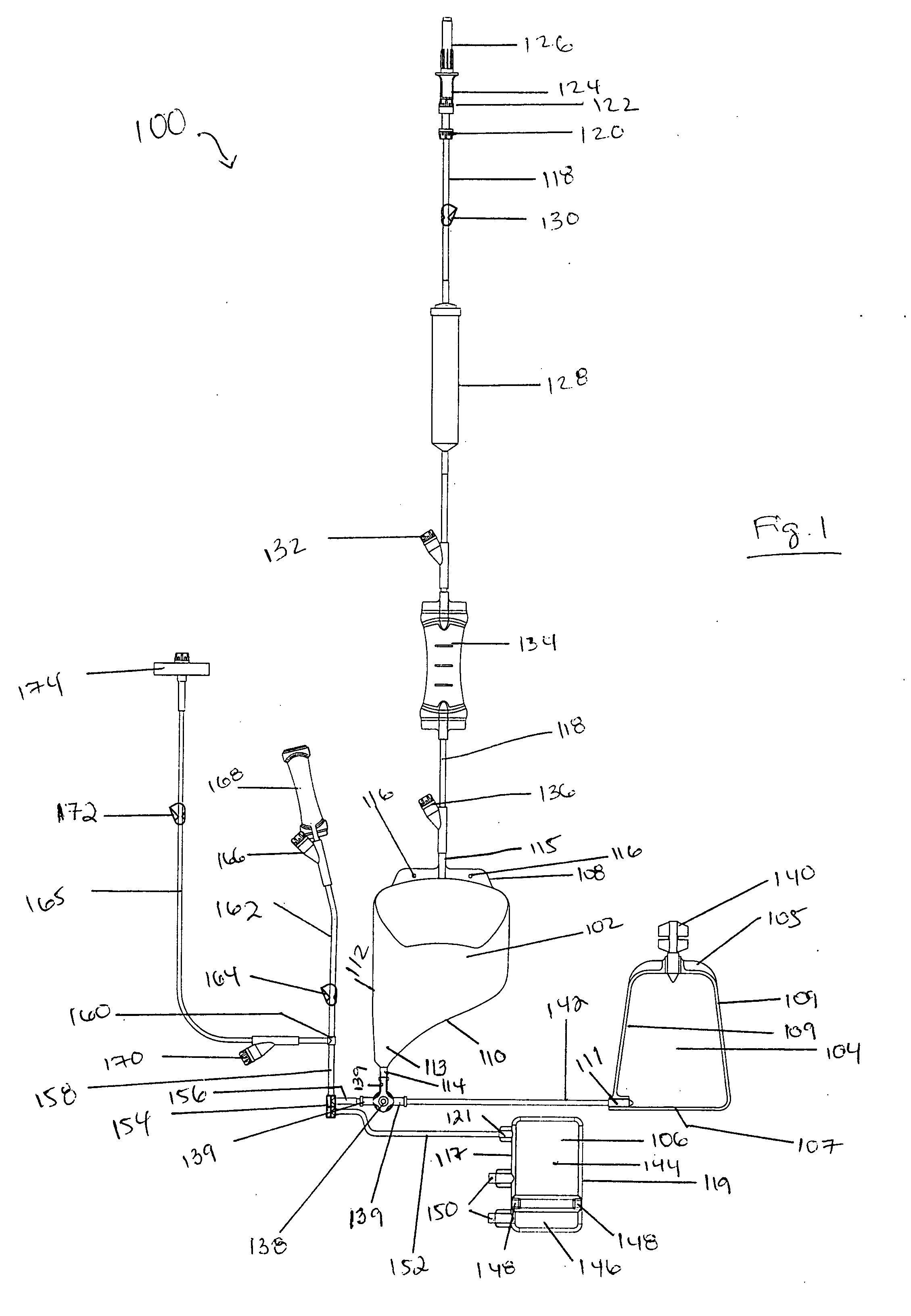Stem and progenitor cell compositions recovered from bone marrow or cord blood; system and method for preparation thereof
a technology of stem cells and progenitor cells, which is applied in the direction of centrifugal force sediment separation, feed/discharge of settling tanks, packaging goods, etc., can solve the problems of inability to obtain human use of stem cells, and addition of undesirable and expensive xenobiotic agents, etc., to achieve the effect of high percentage of stem cells, easy to perform, and not labor-intensiv
- Summary
- Abstract
- Description
- Claims
- Application Information
AI Technical Summary
Benefits of technology
Problems solved by technology
Method used
Image
Examples
Embodiment Construction
[0089] System for Recovering Stem and Progenitor Cell Compositions from Bone Marrow or Cord Blood
[0090] The system includes bag set 100 and processing device 200.
[0091]FIGS. 1 and 2 show an embodiment of bag set 100. Bag set 100 is functionally closed and preferably disposable. Bag set 100 includes three or more bags connected by lines or tubing to a metering valve, with inlet lines, clamps, filters, and sampling sites. Bag set 100 preferably includes three bags: processing bag 102, red blood cell (RBC) concentrate bag 104, and stem cell bag 106.
[0092] Processing bag 102 may be made of ethylene vinyl acetate (EVA), but may also be made of PVC or other plastics. RBC concentrate bag may be made of PVC or other plastics. Stem cell bag 106 may be made of EVA, although other plastics may be used. Bags 102 and 106 may be blow-molded. RBC concentrate bag may be RF welded, although it may be blow-molded.
[0093] Processing bag 102 is a three-dimensional bag that may have an asymmetric sha...
PUM
| Property | Measurement | Unit |
|---|---|---|
| Fraction | aaaaa | aaaaa |
| Fraction | aaaaa | aaaaa |
| Fraction | aaaaa | aaaaa |
Abstract
Description
Claims
Application Information
 Login to View More
Login to View More - R&D
- Intellectual Property
- Life Sciences
- Materials
- Tech Scout
- Unparalleled Data Quality
- Higher Quality Content
- 60% Fewer Hallucinations
Browse by: Latest US Patents, China's latest patents, Technical Efficacy Thesaurus, Application Domain, Technology Topic, Popular Technical Reports.
© 2025 PatSnap. All rights reserved.Legal|Privacy policy|Modern Slavery Act Transparency Statement|Sitemap|About US| Contact US: help@patsnap.com



